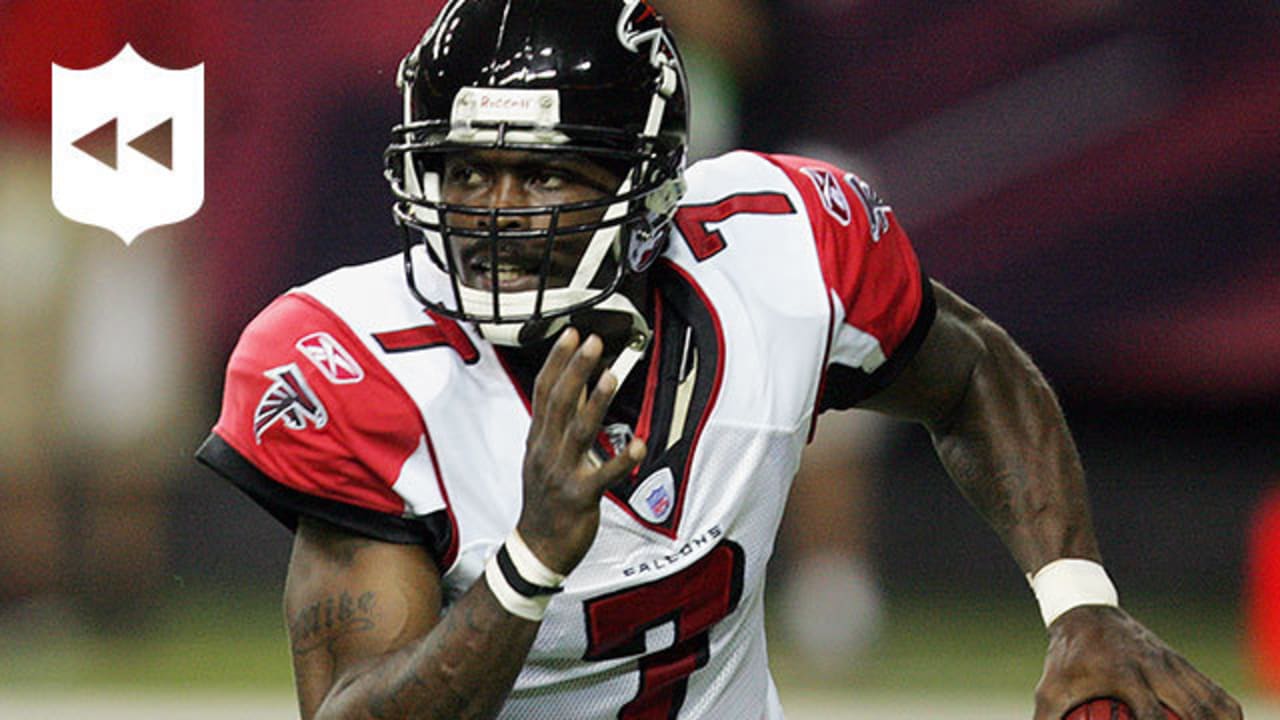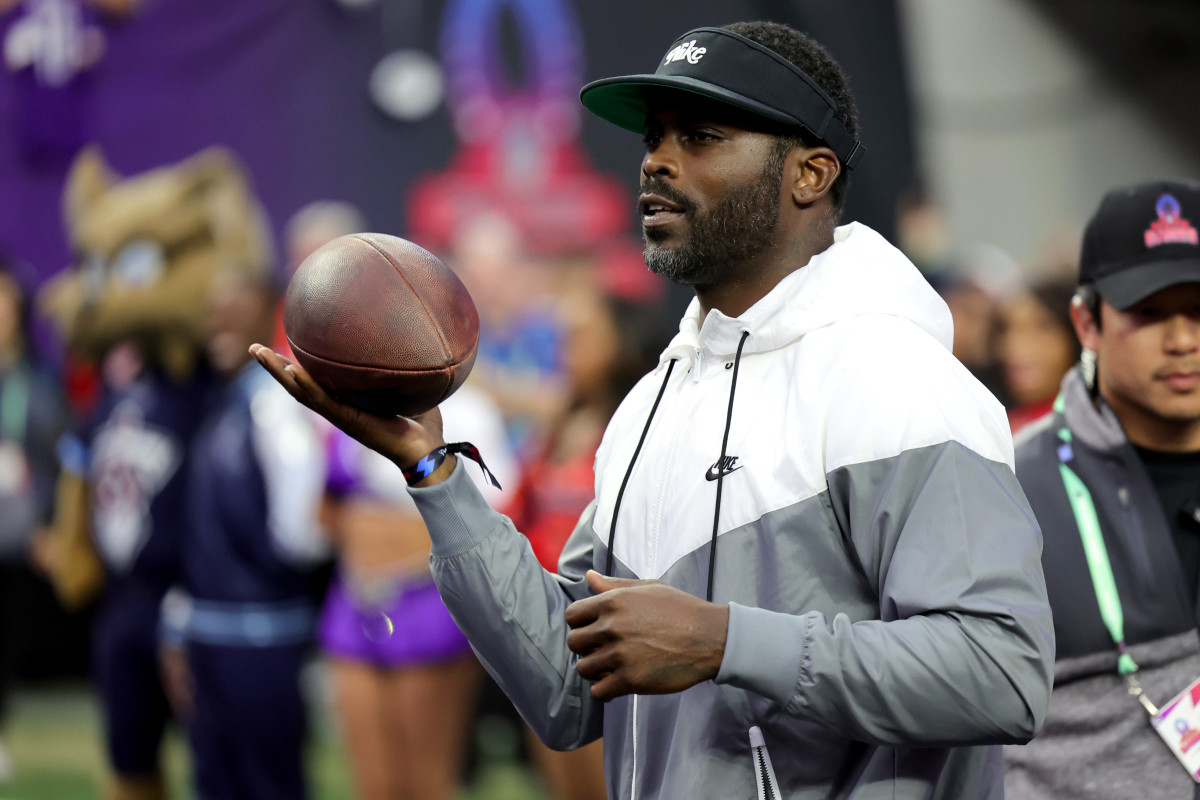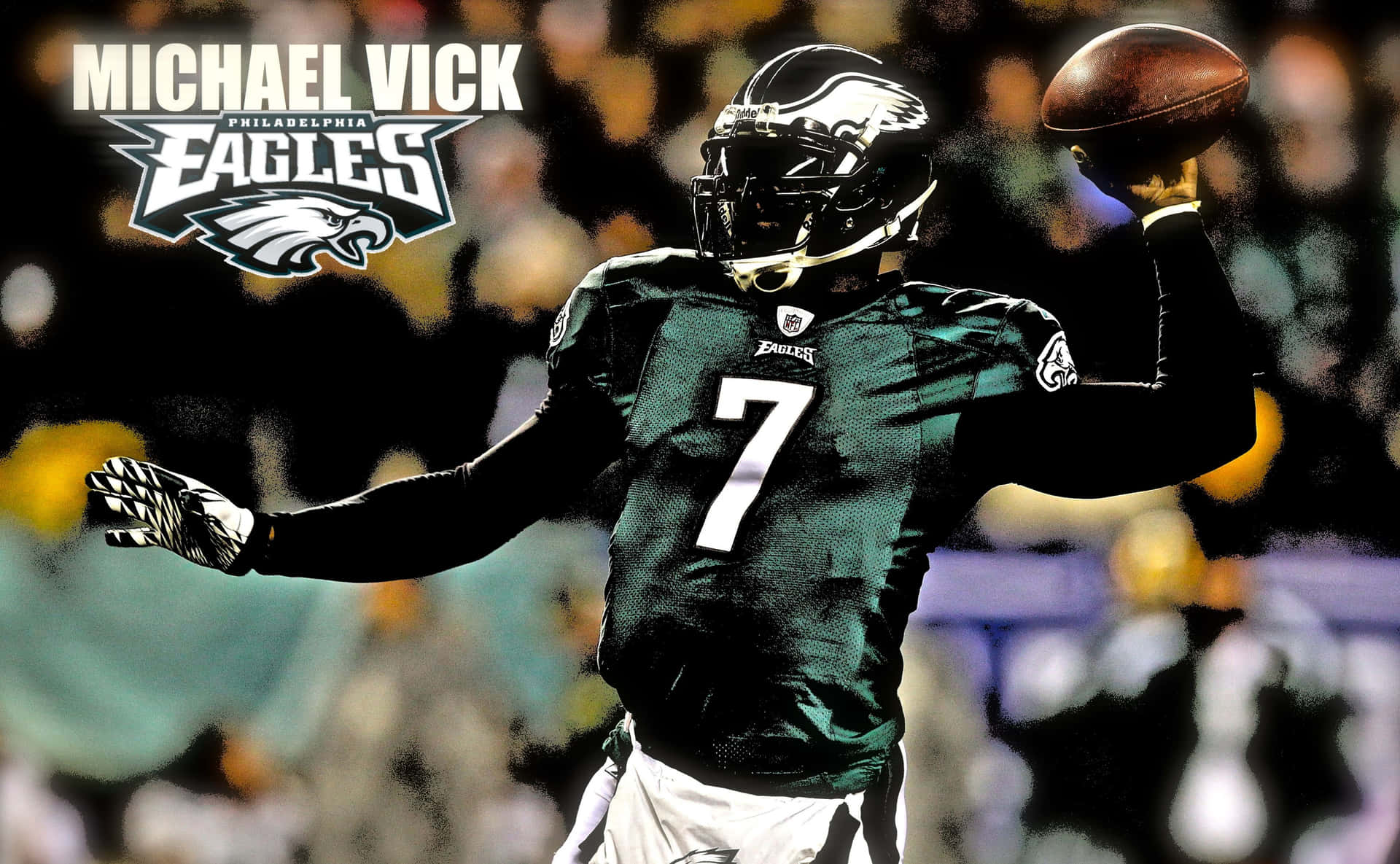Let’s talk about Michael Vick, a name that’s etched deep in NFL history. Whether you’re a hardcore football fan or just someone curious about the stats and story behind this legendary player, you’re in for a treat. Michael Vick is more than just a quarterback; he’s a symbol of athleticism, controversy, and resilience. Today, we’ll dive deep into his career, stats, and the legacy he’s left behind.
Now, before we get into the nitty-gritty, let’s set the stage. Michael Vick’s journey in the NFL wasn’t just about touchdowns and yards. It was about breaking barriers, overcoming challenges, and proving himself time and time again. His career was filled with highs and lows, and his statistics tell a story that’s as compelling as it gets.
But why should you care? Well, understanding Michael Vick’s legacy gives you insight into the evolution of the quarterback position in the NFL. It’s not just about numbers; it’s about how those numbers shaped the game and influenced future generations of players. So, buckle up and let’s explore the world of Michael Vick statistics.
Biography of Michael Vick
Before we dive into the stats, let’s take a moment to appreciate the man behind the numbers. Michael Vick was born on June 18, 1980, in Newport News, Virginia. From a young age, it was clear that he had a talent for football. His journey from a small town in Virginia to the NFL is nothing short of inspirational.
Data and Facts about Michael Vick
Here’s a quick glance at some key details about Michael Vick:
| Full Name | Michael Keith Vick |
|---|---|
| Date of Birth | June 18, 1980 |
| Place of Birth | Newport News, Virginia |
| Position | Quarterback |
| NFL Draft | 1st overall pick by Atlanta Falcons in 2001 |
These facts give you a glimpse into the background of one of the most dynamic players in NFL history.
Michael Vick’s Early Career
Michael Vick’s entry into the NFL was nothing short of spectacular. Drafted as the first overall pick by the Atlanta Falcons in 2001, Vick quickly became the face of the franchise. His early years were marked by a combination of raw talent and incredible athleticism.
During his rookie season, Vick showed glimpses of what was to come. He wasn’t just a passer; he was a runner, and his ability to scramble and make plays with his legs set him apart from other quarterbacks. This dual-threat ability revolutionized the way teams approached the quarterback position.
Let’s break down some key stats from his early career:
- 2001 Season: 1,613 passing yards, 8 touchdowns, and 10 interceptions
- 2002 Season: 3,021 passing yards, 17 touchdowns, and 13 interceptions
- 2003 Season: 2,939 passing yards, 19 touchdowns, and 15 interceptions
These numbers highlight Vick’s potential and the impact he had on the field from the very beginning.
Michael Vick’s Peak Years
Fast forward to the mid-2000s, and Michael Vick was at the peak of his powers. The 2004 and 2006 seasons were particularly noteworthy. In 2004, Vick led the Falcons to the NFC Championship Game, showcasing his leadership and playmaking abilities.
In 2006, despite missing some games due to injury, Vick still managed to put up impressive numbers:
- Passing Yards: 1,749
- Touchdowns: 13
- Rushing Yards: 577
What made Vick special was his ability to create plays both through the air and on the ground. His rushing stats were often more impressive than his passing stats, which was unheard of for a quarterback at that time.
The Controversy Surrounding Michael Vick
No discussion about Michael Vick is complete without addressing the controversy that surrounded him. In 2007, Vick was involved in a dogfighting scandal that led to a 23-month prison sentence. This was a dark chapter in his career, but it also became a turning point.
Upon his return to the NFL, Vick faced a lot of scrutiny, but he managed to rebuild his reputation through hard work and dedication. His comeback story is one of the most inspiring in sports history.
Michael Vick’s Later Career
After his release from prison, Vick joined the Philadelphia Eagles in 2009. This marked the beginning of a new chapter in his career. Playing under head coach Andy Reid, Vick found a new home and a new opportunity to prove himself.
In 2010, Vick had one of the best seasons of his career:
- Passing Yards: 3,018
- Touchdowns: 21
- Rushing Yards: 676
This season not only solidified his place in NFL history but also showcased his resilience and determination.
Michael Vick’s Legacy in the NFL
When we talk about Michael Vick’s legacy, we’re talking about more than just stats. Vick changed the way teams approached the quarterback position. His athleticism redefined what it meant to be a dual-threat quarterback.
Here are some key points about his legacy:
- He was the first quarterback to rush for over 1,000 yards in a season (2006).
- His ability to extend plays with his legs opened up new possibilities for offensive coordinators.
- Vick’s career serves as a reminder that talent alone isn’t enough; character and resilience play crucial roles in success.
These elements make Vick’s legacy one of the most fascinating in NFL history.
Statistical Breakdown of Michael Vick’s Career
Now, let’s take a closer look at the numbers that define Michael Vick’s career:
- Total Passing Yards: 21,740
- Total Touchdowns: 136
- Total Rushing Yards: 6,109
- Total Rushing Touchdowns: 37
These stats highlight Vick’s dual-threat capabilities and his impact on the game. His rushing totals are particularly impressive, especially considering the wear and tear that comes with playing quarterback.
Michael Vick’s Impact on Modern Football
Vick’s influence can still be seen in today’s NFL. Modern quarterbacks like Lamar Jackson and Josh Allen owe a debt to Vick for paving the way for mobile quarterbacks. His ability to make plays with both his arm and his legs has become the blueprint for many teams when evaluating quarterback prospects.
Here’s how Vick’s impact is felt today:
- Teams now prioritize athleticism when drafting quarterbacks.
- Offensive schemes have evolved to incorporate more designed runs for quarterbacks.
- Vick’s legacy lives on in the way teams approach game planning and player development.
These changes reflect the lasting impact Vick had on the game.
Lessons from Michael Vick’s Career
Beyond the stats and the championships, Michael Vick’s career offers valuable lessons for aspiring athletes and fans alike:
- Resilience: Vick’s comeback after the dogfighting scandal is a testament to the power of perseverance.
- Innovation: His playing style forced teams to rethink how they approached the quarterback position.
- Character: Vick’s journey reminds us that character and integrity are just as important as talent.
These lessons are as relevant today as they were during Vick’s playing days.
Conclusion: Michael Vick’s Place in NFL History
In conclusion, Michael Vick’s career is a story of talent, controversy, and redemption. His statistics tell a tale of a player who redefined the quarterback position and left an indelible mark on the NFL. Whether you’re a fan of his or not, there’s no denying his impact on the game.
So, what’s next? If you enjoyed this deep dive into Michael Vick’s legacy, why not share it with your friends? Or better yet, leave a comment and let us know what you think. And if you’re hungry for more NFL history, check out some of our other articles. The world of football is vast, and there’s always more to explore.
Table of Contents
- Biography of Michael Vick
- Michael Vick’s Early Career
- Michael Vick’s Peak Years
- The Controversy Surrounding Michael Vick
- Michael Vick’s Later Career
- Michael Vick’s Legacy in the NFL
- Statistical Breakdown of Michael Vick’s Career
- Michael Vick’s Impact on Modern Football
- Lessons from Michael Vick’s Career
- Conclusion: Michael Vick’s Place in NFL History


